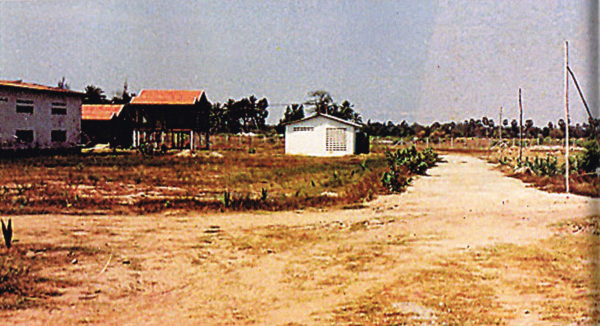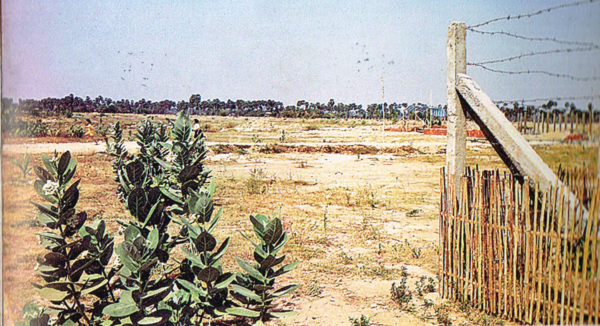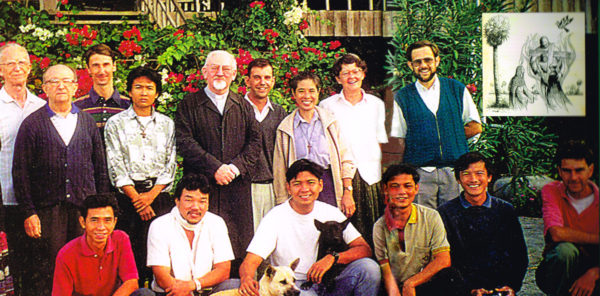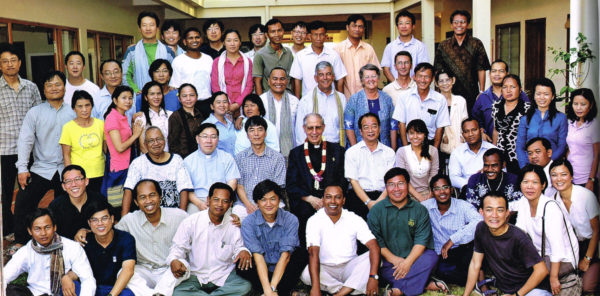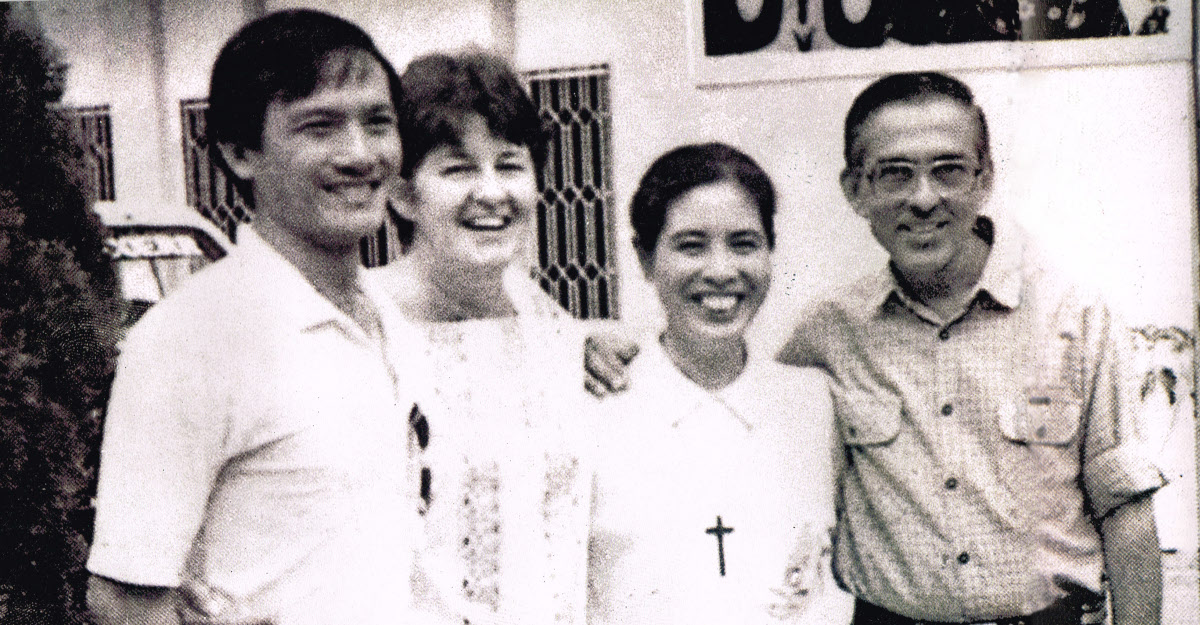
In 2019, Banteay Prieb reached a crossroad. The authorities in Cambodia want to use the land as a National Rehabilitation Center, a one-stop-shop where many organisations and services will be located. The planned buildings are very different from the community-style homes we built to promote friendship, reconciliation and life skills. How did it all begin?
Banteay Prieb was set up in 1991 by the Jesuit Refugee Service (JRS) as a place where people who had lost their legs or arms to landmines and other people with disability could find a place of healing for hearts and minds while learning a skill that could help them have a job or income-generating opportunity.
It grew out of a discernment process in the refugee camps where, in 1989, JRS reflected and took decisions on how best to promote peace and reconciliation among Cambodians. For nine years, they had served in the refugee camps, but the war continued between the camp residents located in Thailand and their compatriots living in Cambodia. Some claimed JRS presence in the camps was promoting peace, not war. The discernment question was: Should JRS withdraw from the camps? Our response was three-fold:
- Some members of JRS would remain in the camps, faithful to the refugees there until repatriation, but no new volunteers would join.
- Some would work with the Buddhist monks in promoting peace talks and reconciliation.
- A small group would enter Cambodia and find ways to promote friendship, peace and reconciliation inside.
Jub Phokthavi (now Father), Sister Ath Long (RIP), Brother Noel Oliver SJ and I arrived by stages in 1990 and began three initiatives:
- Banteay Prieb, a vocational training centre for people with disabilities
- A rural development programme in villages near Banteay Prieb
- Creative reconciliation activities in Phnom Penh
When the team arrived, the government granted us land to use temporarily. The place by the villagers was remembered as a killing field during the Khmer Rouge period, a prison in the next era, an old-arms dump in the Long Nol era and a place affected with landmines and cluster bombs. Carrier pigeons also lived there. The locals called it Banteay Prieb – the place of the dove.
The first students arrived on 24 September 1991, after buildings had been renovated and student houses had been built. On-site too was the office of the Rural Development Programme for the Ang Snuol area, headed by Sister Ath. Students lived in community houses of 12, as they learned basic technical skills of welding, electricity machine repair and carpentry. Production and fulfilling orders for welded and wooden furniture was part of the training. Phaiphan, Anucha (RIP) and Kmol, three Thai technical teachers, joined the team along with Cambodian counterparts, Vudtha, Phal, Phat and Top Tith.
Malcolm Ramsay and Rob Allsop introduced agriculture and environmental awareness. Sculpture began with Chay Saron. Fr Jean Marie Birsens SJ attended to pastoral care.
Memories come floating back.
- Graduation ceremonies with students dancing for joy
- Welding students making the first hooks to help remove landmines
- The setting up of the wheelchair shop with Motivation in 1993
- The production of tables, chairs and electrical repairs
- The letter from Tun Channareth, Hem Phang, Klieng Vann and Suon Chreuk launching the Cambodian Campaign Against Landmines
- Female students joining classes in sculpture, tailoring and electricity in 1996
- The tragic deaths of Scholastic Richie Fernando SJ (RIP) and Soun Lavi (RIP)
- The visits of three Father Generals, Fr Kolvenbach, Fr Nicolás and Fr Sosa
- The beginning of classes for the intellectually-challenged
- Technological innovations leading to classes in phone repair and computer

Graduates and past staff, wheelchairs and production workers are now spread far-wide, some highly successful, some still struggling. Many are involved in helping other people with disability, some in the school itself, some in remote village outreach or distributing wheelchairs. A total of 2,800 students have learned at the training center. More than 25,000 wheelchairs have been produced. The outreach workers accompany and offer livelihood support in all Cambodia’s 25 provinces.
Jesuit Directors have included Fr Joaquin Salord, Fr In-don Oh, Fr Greg Priyadi, Fr Oh-chang Kwon, Fr Rudy Chandra and Jub Phokthavi (before he was a Jesuit). Bishop Kike Figaredo SJ inspirited the wheelchair shop and Totet Banayanal, as a scholastic, promoted the outreach programme. The lives of many scholastics and volunteers were transformed during their Regency at Banteay Prieb. Eucharist on Tuesday nights for the whole team inspired action, built community, and deepened reflection and prayer.
Alongside the training centre, the Rural Development Programme led by Sister Ath, Yan Sat and Nong Sophal reached out to thousands of villagers, with rice-banks, cow-banks, food for work infrastructure, toilets, housing, wells and income-generation. In the district of Ang Snuol, 28 schools were built and thousands of poor children received schooling assistance. JRS / Jesuit Service was known by the authorities and villagers as “Ankar Yeng”, our NGO.
Perhaps, the time has come when Banteay Prieb will no longer be a training centre or even a hub for rural development. Our desire is that whatever it becomes it will continue to serve the poor and excluded members of society. It can still be a place where the government of Cambodia shows it has a heart for the vulnerable and the commitment to promoting their rights and quality of life.
We hope the last 30 years will be remembered as a place of healing, hope and advocacy for people with disability, a place where reconciliation, justice and compassion flourished. For many of the Jesuit Mission in Cambodia, it has been a place of conversion, a place where we received so much from the resilient spirits of people injured in body or poor in material goods. May the spirit of peace prevail!
Sr Denise Coghlan RSM
JRS Cambodia Director


